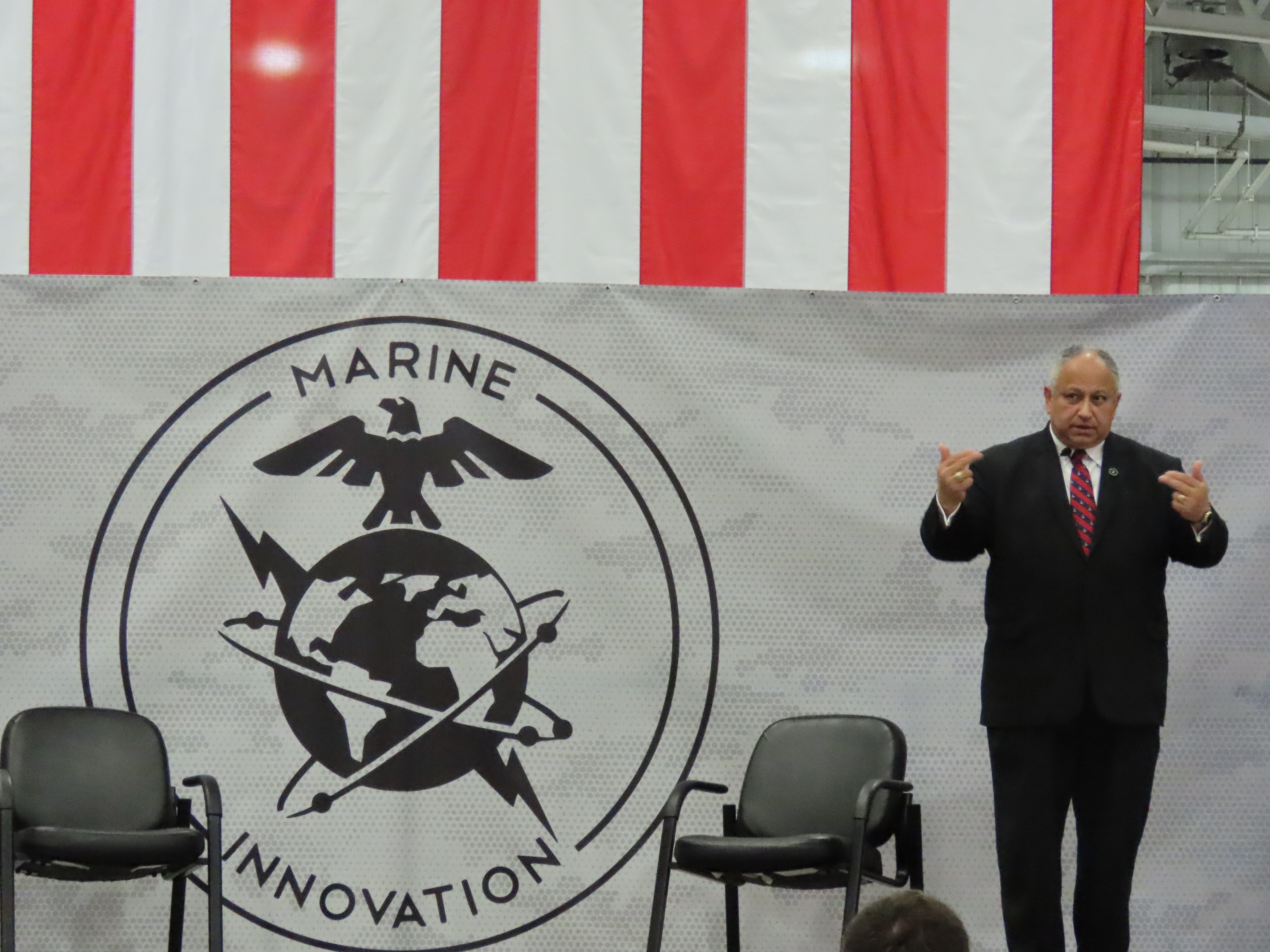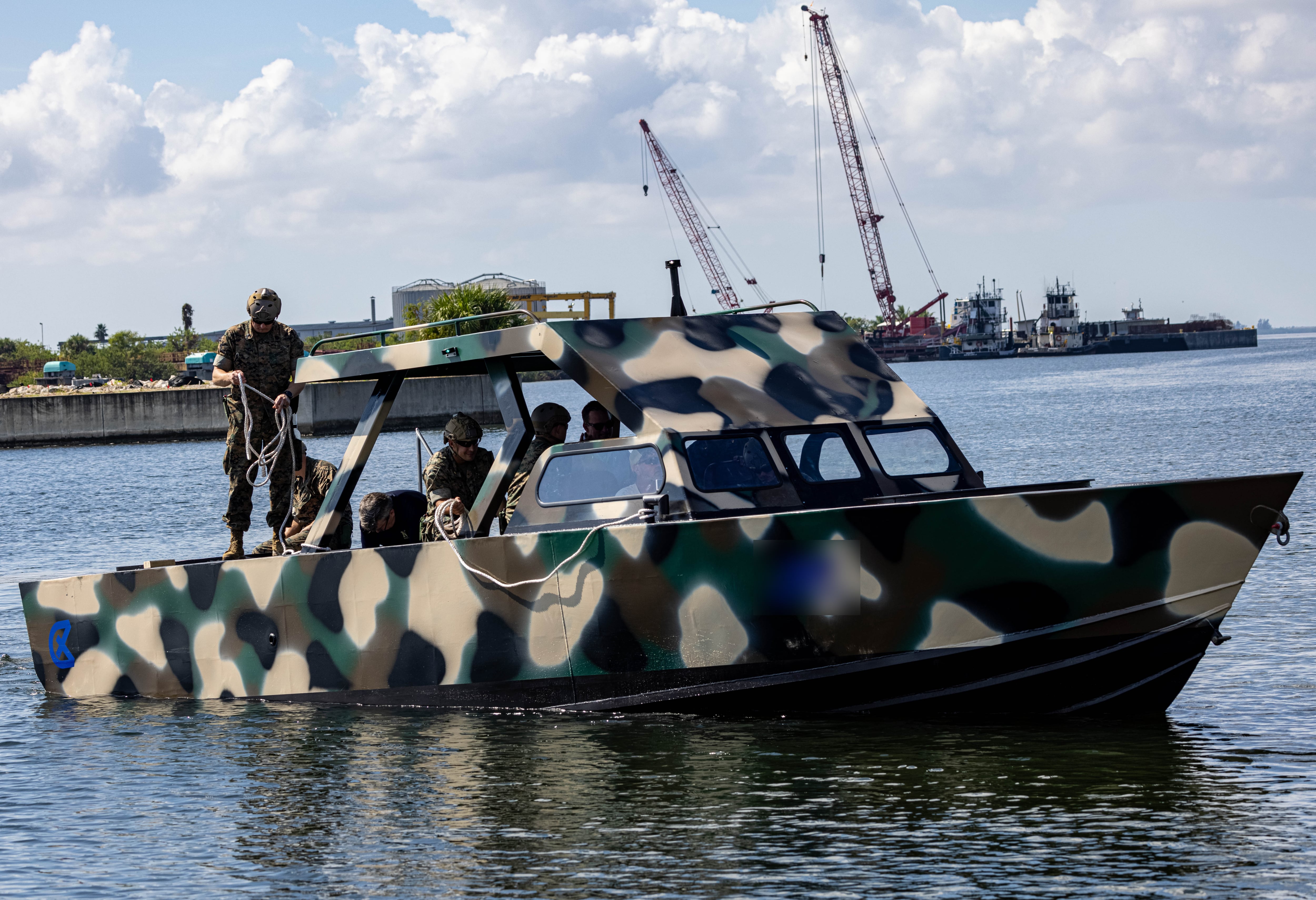STEWART AIR NATIONAL GUARD BASE, N.Y. — The U.S. Marine Corps inaugurated its Marine Innovation Unit here on May 5, as the reserve formation is already claiming some early wins as the proclaimed “problem solvers” for the service.
Navy Secretary Carlos Del Toro, on hand for the celebration, said he ordered the creation of the Defense Innovation Unit-inspired group nearly two years ago and was already impressed with the talent it had attracted and the projects it had taken on.
The Marine Innovation Unit will have about 270 reservists by the end of the fiscal year; about 80% are officers and 20% enlisted Marines, MIU commanding officer Col. Matthew Swindle told Defense News following the unit activation ceremony.
Unlike most reserve units, rank and occupational specialty were irrelevant in selecting which Marines would join; about 1,000 Marines applied and were each carefully considered based on their education and experience from their day jobs. The unit is meant to pull together Marines who also have expertise and connections in the worlds of business management, cyber, artificial intelligence, robotics, data analytics, venture capital and more — expertise the active component needs but lacks.
Swindle said some of the Marines in the unit would be put on long-term orders to work as Marine liaisons in other innovation centers like the Strategic Capabilities Office, the Defense Advanced Research Projects Agency, the Air Force Research Laboratory, the Army Futures Command and more.
But the bulk of the work will center around requests that active-component Marine commands send over. MIU members will help them characterize specific problems and then scour their networks to see if anyone is working on a suitable solution; if not, they’ll reach out to industry to find vendors who can rapidly solve the Marines’ needs. Once a solution is in the works, the team will move on to the next project.
Calling the Marine Innovation Unit “the latest embodiment of the Marine Corps’ legacy of innovation,” Del Toro said he was relying on this group to facilitate rapid acquisition of the tools the service needs to stay technologically ahead of the Chinese navy.
The first big win the unit achieved — just days before the ceremony — directly supports the service’s Force Design 2030 modernization effort.
As part of that push, the Reserve’s 4th Assault Amphibian Battalion was facing cuts. In seeking a new mission for these reservists, the Marine Corps decided to transition the legacy assault amphibious vehicle unit into one that would experiment with small craft in support of the new Stand-In Forces and Expeditionary Advanced Base Operations concepts, Swindle explained.
But the Marine Corps needed to find small craft for them to use.
Swindle said the idea came out of last May’s Modern Day Marine conference in Washington. By June and July, MIU was already huddling with the Defense Innovation Unit and the Marine Corps Warfighting Lab, and by August they had kicked off a commercial solutions opening through DIU. Throughout the fall they winnowed down from 34 vendors to 11 vendors to just four vendors in a demonstration. As of earlier this month, just shy of one year later, Commandant of the Marine Corps Gen. David Berger signed off on buying the boats, Swindle said, marking the end of a process that might have taken four or five years under traditional acquisition models.

Though the unit just formally stood up, Swindle said MIU already has more than 130 projects in various stages of completion. Many concern Marine organizations struggling with information management — they collect a lot of data but can’t use it — or those wanting to conduct a rapid acquisition effort but can’t figure out how to get started.
Swindle offered one example of an ongoing project with the deputy commandant for information.
“Of the multiple forms of information and intelligence that comes in, there are some that we have very classified, bespoke things that only the DoD and the U.S. government do. But there’s also a lot of things that are going on just in plain sight on social media — there are multiple terabytes of data [daily] that are generated; well, how do you make sense of that? What’s the prevailing narrative? What’s going on that’s important to a combatant commander or to a [Marine Expeditionary Force] commander? That’s a really wicked problem to solve,” the colonel said, but it’s also one that could lend itself to creating a consortium with other defense organizations facing the same problem, and for which a commercial solution may already exist.
Rep. Pat Ryan, a Democrat on the House Armed Services Committee and whose district includes Stewart Air National Guard Base, also spoke at the event. He called the Marine Innovation Unit’s mission “personal,” both from his experience as a soldier and then as a small business owner trying to work with the Defense Department.
He said during a speech that “I have personally experienced a lot of the frustrations and pain points” that small businesses still face 15 years later.
“One of the biggest ones was just getting access to the problem, meaning, being able to sit down with folks in the field and understand what are your greatest needs, and then to have access to some of the classified information that you’d need to actually be able to solve those problems,” he told Defense News.
Ryan added that “the urgency of the China threat has been a wakeup call for a lot of folks” and that perhaps a clear threat plus the help of the Marine Innovation Unit could create a real change for the Marine Corps.
Megan Eckstein is the naval warfare reporter at Defense News. She has covered military news since 2009, with a focus on U.S. Navy and Marine Corps operations, acquisition programs and budgets. She has reported from four geographic fleets and is happiest when she’s filing stories from a ship. Megan is a University of Maryland alumna.








